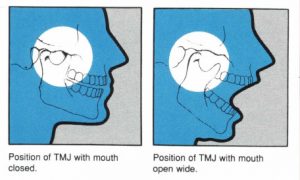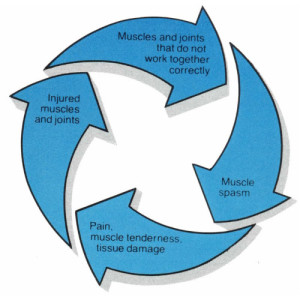Dr. Roger Druckman has been treating TMJ/TMD patients for over 35 years. He has 3 fellowships for his work in TMJ/TMD diagnosis and treatment from the Academy of Dentistry International, the International College of Cranio-Mandibular Orthopedics, and the American Academy of Craniofacial Pain. Dr. Roger Druckman has a diplomate in pain management from the American Academy of Pain Management and passed the board exams in TMJ from the American Academy of Craniofacial Pain and pain management from the American Academy of Pain Management. He has been invited to represent the United States in delegations to China, Russia, Vietnam, and South Africa for his expertise in TMJ/TMD and pain management. Dr. Roger Druckman has been involved in TMJ/TMD treatment research and has written articles pertaining to TMJ/TMD diagnosis and treatment. Therefore, due to his extensive knowledge, he is a recognized authority and lectures across the U.S. He has treated both trauma and non-trauma related TMJ/TMD patients. Furthermore, Dr. Roger Druckman is one of only a handful of doctors responsible for helping to establish that TMJ/TMD can be caused by trauma, such as a motor vehicle accident without a direct blow to the jaw.
Dr. Roger Druckman’s philosophy of treatment is to begin conservatively and proceed to more complex treatments only if necessary. He has treated thousands of patients who are now living pain free and has referred less than 1% of his patients for surgery! Dr. Roger Druckman believes in collaborative treatment with the patient by explaining the results of his thorough and careful examination of the presenting problems, and always keeps the patient abreast of the ongoing treatment. He utilizes splint therapy and, if necessary, he , manipulation of the condyle onto the disc, and Microcurrent pulse therapy. By following Dr. Roger Druckman’s recommendations, surgery can be avoided even in cases where there is a perforation of the posterior ligament and the condyle (top, back part of the mandible) is riding on the temporal bone itself.
Neuromuscular Dysfunctions
Millions of people suffer needlessly from head, neck, face, and jaw pain, and much of it is related to an imbalance in the temporomandibular joint (jaw joint) or TMJ, which can result in chronic illnesses. Unfortunately, many head pain sufferers are never diagnosed as having a jaw joint problem; although, if properly diagnosed, patients can gain great relief and avoid unnecessary emotional and physical stress associated with their pain and dysfunction.
The following information will explain TMJ dysfunction (temporomandibular joint imbalance) and how it can cause referred pain. In addition, diagnosis and effective non-surgical modes of treatment will be discussed.
TMJ dysfunction (TMD) involves two joints that are connecting the jaw to the skull, but also affects other bones, muscles, and nerves in the head, neck, and face. When facial nerves and muscles are affected by a misaligned joint, it causes MPD, or myofascial pain dysfunction. An untreated person with TMD and MPD will feel stress in the neck, face, and head. If the jaw is not aligned properly with the skull, the person experiences a condition known as CMD, or craniomandibular dysfunction, which results in popping, grating, clicking, or locking of the jaw when swallowing or chewing.

Symptoms of TMJ
Accurate diagnosis of a TMJ problem can be a challenge since the symptoms masquerade themselves in seemingly unrelated forms. Only with training and sophisticated equipment can a TMJ dysfunction be identified with certainty. If you suffer from any of the symptoms listed below, you need a TMJ checkup:
- Tension headaches
- Frequent dizzy spells
- Face, neck, and shoulder pain
- Limited movement or locking of the jaw
- Numbness in fingers and arms
- Earaches or ear stuffiness
- Popping, clicking, or grinding jaw joints
- Jaw pain
- Difficulty or pain when chewing
- Pain behind the eyes

How to Diagnose TMJ Dysfunction
If you think that TMJ dysfunction may be the cause of your problem(s), there are several tests you can do or questions you can ask yourself. Please take a few minutes to take this test. It just might prove to be the best time you’ve ever spent!
- Do you have a grating, clicking, cracking, or popping sound in either or both jaw joints when you chew?
- Do you have sensations of stuffiness, pressure or blockage in your ears? Is there excessive earwax production?
- Do you ever have a ringing, roaring, hissing, or buzzing sound in your ears?
- Do you ever feel dizzy or faint?
- Is your jaw painful or locked when you get up in the morning?
- Are you ever nauseous for no apparent reason?
- Do you fatigue easily or consider yourself chronically fatigued?
- Are there imprints of your teeth on the sides of your tongue?
- Is it impossible to swallow quickly five times in a row with the last swallow being as easy as the first swallow?
- Does your tongue go between your front teeth when you swallow?
- Do your fingers sometimes go numb?
- Do you have any pain or soreness in any of the following areas: jaw joints, upper jaw or teeth, lower jaw or teeth, side of neck, back of head, forehead, behind eyes, temples, tongue or chewing muscles?
- Is it hard to move your jaw from side to side or forward and backward?
- Do you have difficulty in chewing your food?
- Do you gulp your food, swallowing it whole or almost whole?
- Do you have any missing back teeth?
- Have you had extensive dental crowns and bridgework?
- Do you clench your teeth during the day?
- Do you grind your teeth at night? (Ask a significant other.)
- Do you ever awaken with a headache?
- Have you ever had a whiplash injury?
- Have you ever worn a cervical collar or had neck traction?
- Have you ever experienced a blow to the chin, face, or head?
- Have you reached the point where drugs no longer relieve your symptoms?
- Does chewing gum start your symptoms?
- Is it painful, or is there soreness, when you press on your jaw joints or on the cheek just below them?
- Is it painful to stick your “pinky” fingers into your ears with your mouth wide open and then close your mouth while pressing forward with your “pinky” fingers?
- Does your jaw deviate to the left or right when you open wide? (Look in the mirror.)
- Are you unable to insert your first three fingers vertically into your mouth when it is opened wide?
If you have answered “yes” to a substantial number of the following questions, you may very well be one of the many millions of people suffering from TMJ dysfunction. Therefore, it may be beneficial for you to have a thorough dental examination!
If your dentist is unfamiliar with TMJ dysfunction or claims to know all about it but assures you that it is not your problem, it might behoove you to get another opinion. If your dentist or physician tells you that you don’t have a TMJ dysfunction, it may be because he or she is simply unaware of the many advances in TMJ diagnosis that have occurred in recent years.
The Causes
People who suffer from these dysfunctions have a structural imbalance in their jaw-to-skull relationship. A temporomandibular joint dysfunction results when there is disharmony in a component of the occlusal system. An abnormal bite, a blow to the jaw, or a “whiplash” can precipitate a chain reaction, resulting in the development of muscle spasm within the jaw mechanism.
Joints are designed to function in a friction-free manner. On occasion, a clicking or grinding sound may be heard in the jaw joint.
CLICKING OR GRINDING SOUNDS ARE ABNORMAL!
Clicking sounds are caused by a lack of coordinated movement between the jaw joint and a cartilaginous disc that serves as a “shock absorber.” If the disc is out of position, the condyle bone and the skull rub against each other. Clicking is an early warning sign that a problem exists within the jaw joint.
The Diagnosis
Most patients who come to this office for the treatment of temporomandibular joint disorders are referred by their family dentists; internists; ear, nose, and throat doctors; neurologists; or chiropractors who will continue to be responsible for all other aspects of the patients’ health.
Dr. Roger Druckman uses a variety of painless tests to determine the health of a patient’s TMJ. The Doppler/Ultrasound is a painless, non-invasive testing device that is not common in a physician or general dentist’s office, yet it takes the guess work out of identifying the condition of the TMJ. Muscle palpation, X-rays, and range of motion studies are additional diagnostic strategies utilized.
The Treatment
Once a patient has been diagnosed as having a TMJ dysfunction, Dr. [doctor_naem] develops a treatment plan. A model of the patient’s mouth, photos, medical history, and the patient’s jaw and bite measurements are all prepared in order to monitor his/her progress. Treatment is divided into two phases: realignment and stabilization.
The REALIGNMENT PHASE is repositioning the mandible to the cranium to effect the relaxation of the muscles of mastication and other associated musculature, restoring the patient to a normal range of motion, restoring his or her function, and eliminating his or her pain. This treatment will lengthen the musculature to achieve muscle relaxation in order to break up the muscle spasm. This will decrease the patient’s pain and allow the patient to return to a normal range of motion, thereby restoring his or her life without the excruciating pain.
Dr. Roger Druckman’s patients are his strongest testimonial to the successes he has in eliminating pain and restoring function.
Treatment can include any of the following:
- Splint therapy
- Manipulation of dislocation
- Microcurrent pulse stimulation
The STABILIZATION PHASE is not always needed, but when necessary, orthodontic appliances are often used. The treatment during this phase varies depending on the patient’s needs.
Ninety-eight percent of the patients who receive early treatment are cured. If TMJ dysfunction is left undiagnosed, the chance of a full recovery is reduced; although, Dr. Roger Druckman has been very successful in decreasing permanent symptoms and relieving chronic pain.
Early identification and treatment of TMJ dysfunction are essential for the immediate and future well-being of each patient.
Please visit our office in Lakewood, Colorado, and receive your comprehensive TMJ examination and consultation and start on the road to becoming pain-free. Dr. Roger Druckman is a TMJ specialist who can eliminate your pain! Call Dr. Druckman directly at 303-324-0173 today to schedule your appointment!


 303-324-0173
303-324-0173